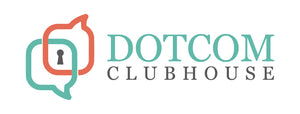One of the many benefits to teletherapy is the global impact - removing location as a barrier allows anyone, worldwide, to access a skilled therapist by simply clicking a link on the computer. This increasingly sought after mode of therapy is being implemented to assist with increasing disability rates, therapist shortage, and brick-and-mortar setting drawbacks such as 9-5 barriers.
Fourteen months ago, when I was working as a DotCom Therapist, I received a referral for a child living in Asia who was reportedly speech delayed and unintelligible in her primary language of English. With this partnership, my professional, overseas experience began; I was working in Asia from Missouri.
The experience has been rewarding both professionally and personally. Recently, a picture of me alongside my private patient from Asia (see above) went virtual which created interest in the story behind the photo. So, here it is. My story of global work from my desk in the states.
Background
The very first day on camera I remember feeling nervous despite all my experience as a teletherapist. As an individual who has never traveled outside of North America, I wondered about language barriers and cultural differences impacting the services rendered. However, the minute I entered our virtual therapy room I realized that they were a family concerned with their child’s speech and I was a therapist with the training needed to help them with their concerns. Just like many families in America, this family had experienced countless suggestions as to why their child was speech delayed--autism, adoption, siblings, stubbornness, etc. Fortunately, upon evaluation, we were able to determine that this child has Childhood Apraxia of Speech (CAS).
Therapy Is Therapy
The main aspect that remained a constant for me and my patient, regardless of country or culture, was the effectiveness of evidence-based intervention. Regardless of cultural influences, timezone, pragmatic differences, or any other variations, evidence-based practice remains effective and successful. Fortunately, Childhood Apraxia of Speech intervention has been well researched, and that research guided my approach as a therapist and the course of therapy just as it would if I was providing therapy to a child in my neighborhood.
Therapeutic Outcomes
As someone with experience treating CAS, I can say that the gains made were comparable, if not enhanced, via the teletherapy platform. Both intelligibility and articulation precision increased substantially. We were able to use parents as the facilitators, so they were able to see prompting and modeling that was used which helped them later on. This consistent implementation of approach allowed for increased generalization. I was pleased with the outcomes measured and am looking forward to increasing complexity of goals to continue and increase intelligibility when communicating wants and needs.
The Beauty in Differences
Although the intervention was consistent, there were still beautiful cultural differences that I thoroughly enjoyed. I started the session by saying "Good Morning” to her while they left the session telling me "Good Night.” They were always a day ahead of me and we enjoyed discussing the weather differences. This client was always finishing up breakfast right before our sessions, which typically involved foods I had never heard of--meals made of flax and grains (although, her mom and I share a similar love for coffee). One other difference was the pictures I used had to be changed to be culturally appropriate. For example, with a picture of the word "fork,” I quickly learned that a fork is not a universally used utensil.
Throughout our sessions, I really enjoyed hearing about their tight-knit neighborhood that acted like an extended family. I also learned that the cultural perception of a speech impairment in and of itself was quite interesting, as this family experienced. In America, a child with a speech disorder that impacts educational performance is able to receive support from qualified educators. However, that is not the case throughout the world, unfortunately, there is still a stigma placed on children who are difficult to understand. This stigma frequently ties speech impairment to intelligence which we know is not the case and was very much not the case with this bright, opinionated, and spirited private patient of mine. These differences excited me, but they also helped me realize there is still work to be done to shift perceptions regarding speech disorders. What better way to embrace cultural differences and advocate for changing perceptions on speech disorders, than to connect and share via a remote platform?
The Therapist Shortage is Real
Even in cultures where speech therapy is not utilized in the same manner as it is in America, there is still a skilled therapist shortage. The professionals that are able to educate, inform, and intervene are few and far between. This, to me, is one of the most beneficial things about teletherapy. With teletherapy being increasingly used as a mode for delivering skilled therapy services, we are able to give families worldwide access to a skilled professional.
On a personal note, I didn’t just treat a child overseas but I gained a pen-pal and met a truly amazing family. Recently, they came to America to discuss their work in Asia, including their work with their orphanage. To meet them in person and to get to hear their story as we ate lunch, was truly a special moment. I look forward to the future, not just with this family, but with the overall global impact that DotCom Therapy is providing.
You can learn more about this family’s work and ways to support their cause here: https://www.facebook.com/SunriseDevelopmentFoundation/
